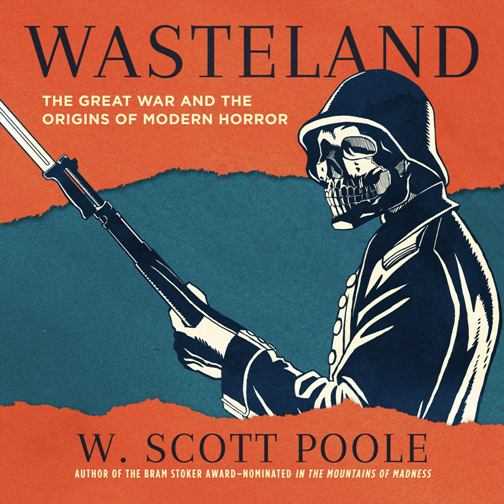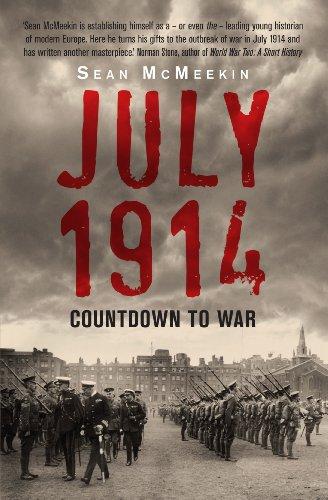A while back I wrote a little bit about writers doing research. Writer Christina “DZA” Marie invited me over to her place to flesh that idea out a bit more, with a particular focus on fantasy writers doing research. It’s a thing!

A while back I wrote a little bit about writers doing research. Writer Christina “DZA” Marie invited me over to her place to flesh that idea out a bit more, with a particular focus on fantasy writers doing research. It’s a thing!

Ever just fall down a rabbit hole and disappear into a topic for a while? For the past couple of months I’ve been reading nothing but books on the First World War. I hadn’t been driven to do so during the 100th anniversary observances over the past few years, so what dragged me in? Would you believe me if I said it was an interest in genre fiction?
Wasteland: The Great War and the Origins of Modern Horror is exactly what it sounds like – an exploration of how men (mostly) who fought in World War I impacted the development of horror, particularly in the nascent motion picture industry.

Many of the early classic horror films – from Nosferatu through Bride of Frankenstein – have connections that date back to the carnage of World War I. Wasteland does a good job of surveying the various developments in the arts as people began to process the industrial scale of death that the war brought, different in orders of magnitude from anything before. Plus, I had no idea Salvador Dali was such an asshole!
Reading Wasteland made me realize that, aside from some broad brush strokes I picked up in school, I really didn’t know much about World War I, so I decided to dive into some of the history of it. Where better to start than the beginning, right?
On June 28, 1914, a Serbian nationalist name Gavrilo Princip shot and killed Archduke Ferdinand of Austria (and his wife), heir to the throne of Austria-Hungary. Most people know that as the “start” of the war, but the truth is much more complex (and interesting). In fact it was a month before hostilities broke out, a month during which diplomatic wheels were constantly in motion. That month, the “July Crisis,” is the focus of July 1914: Countdown to War, which exhaustively covers the debates, maneuverings, and petty squabbles of parties all over Europe as the continent slouched towards war.

What was most amazing to me (aside from the fact that in a large number of states a hereditary autocrat was actually in charge – 100 year ago!) is how little emotional investment the various players had in Ferdinand’s death. Certain his own father didn’t seem all the broken up, as did most of the power brokers in Austria-Hungary, who saw him as a potential reformer and were happy to be rid of him. Only German Kaiser Wilhelm really seemed broken up about it. So what Ferdinand’s death just a cynical crisis used to give everybody an excuse to go to war? No, the roots of the war date back into the 19th century (who knew the integrity of an independent Belgium was so important?), but what is clear is that everybody involved had a plan if war was coming and once they committed to them, the die was pretty much cast.
Moving on from the start of the war, my next read was A World Undone: The Story of the Great War, 1914 to 1918.

Rather than getting bogged down in the details of a particular battle of campaign, the book provides a swift (if lengthy) overview of the war on all fronts. Sometimes it’s a little too much overview. For example, the chapter on Gallipoli mentions how a British force could have taken advantage of something had it moved quickly, but it took four weeks – we never learn why. Unfortunately for me, it spends the first section (of six) on the July Crisis, so it was a little redundant for me. More disappointing, it didn’t deal in similar detail with what happened after the war and during the various peace talks. In between, though, it’s a depressingly fascinating catalog of the various failures of the parties to figure out something to do other than grind millions of people through useless battle after useless battle. You’d think, for example, that generals and politicians could put aside petty personal differences in the face of existential threats to their country (one of the interesting recurring themes is how the propaganda of the war made pursuing peace settlements hard – who wants to make peace with the devil?), but, alas, people are people, even in the middle of the Great War.
Since A World Undone didn’t touch much on what happened after the war I decided that I needed one more book to finish things up. Rather than dive into a book about the peace conferences and treaties (of which the Treaty of Versailles was just one) I went with The Vanquished: Why the First World War Failed to End. Provocative title, no?

The point of The Vanquished is that the war destabilized Europe and the Middle East to such an extent that the “peace” actually constituted a lot of revolutionary violence and civil wars. Most of it was in Eastern Europe (don’t forget that Russia got out of the war once the czar was deposed) and the places that had been carved out of the late Ottoman Empire like new-fangled countries Iraq and Jordan. Of course, Germany didn’t escape unscathed by all this, setting the stage for the rise of Hitler. Even countries on the winning side, like Italy, fell to popular revolution.
On the one hand he First World War wrought huge changes in the world. It swept away the last vestiges of most European monarchies, at least as the people who actually ran their countries. It launched the United States into place as a major international player. And, technologically, it introduced a host or horrible things to modern warfare. But, in a lot of ways, it didn’t change much. Or, more accurately, it left so much unresolved that the Second World War was almost inevitable.
I’ve got a better handle on that now, thanks to all this reading. I can’t say it restored any of my faith in humanity, though. I recommend all these books – but maybe not to read all in one go.